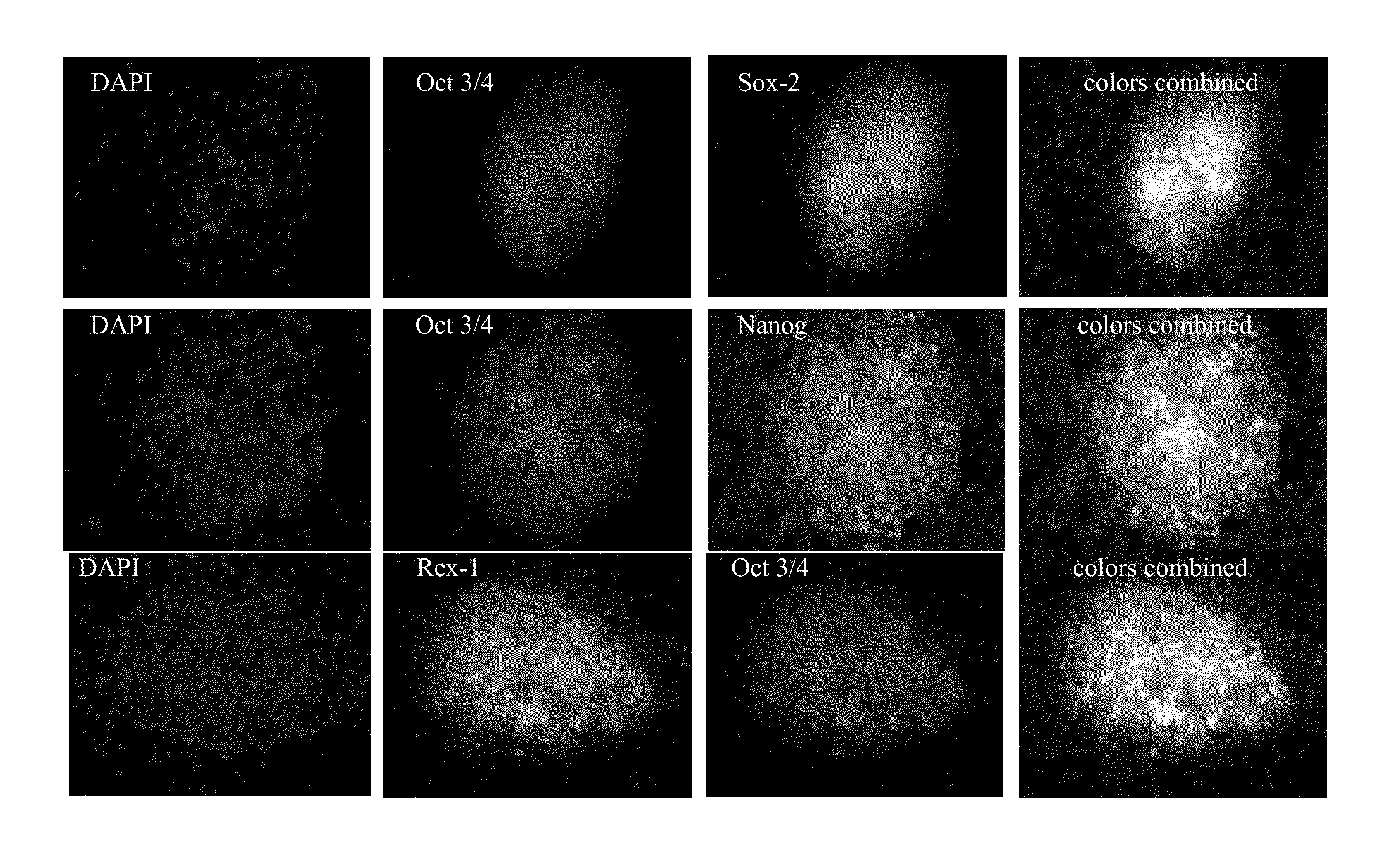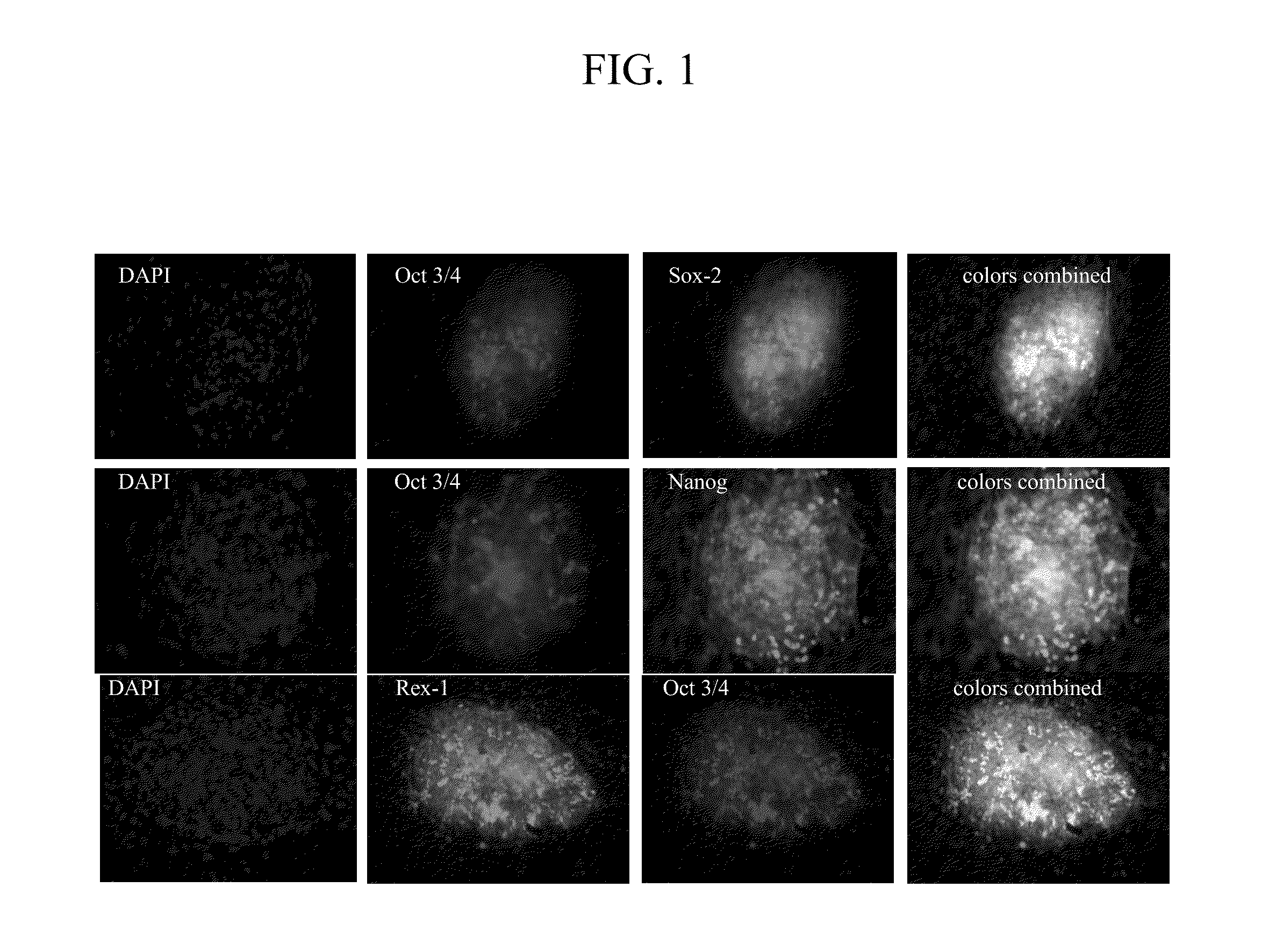Reprogramming normal and cancerous human cell lines into human induced poluripotent stem cells by co-electroporation with living xenopus laevis frog oocytes
- Summary
- Abstract
- Description
- Claims
- Application Information
AI Technical Summary
Benefits of technology
Problems solved by technology
Method used
Image
Examples
example 1
[0098]we demonstrated that controls: “a”, “b”, “c”, and “f” to be RP-negative. In control “d” where non-electroporated donor cells were exposed for 3 hr to electroporate we detected ˜0.4% RP efficacy (calculated only for CD4TLs, data not shown). In control “e” where electroporated donor cells were exposed to electroporate for 3 hr RP efficacy was elevated in comparison with control “e” and was ˜0.9% (calculated only for CD4TLs, data not shown).
example 2
[0099]we demonstrated that BQ-activated human bone marrow stromal cells can de-differentiate into iPSc-like cells, which appeared to be indistinguishable from human embryonic stem cells in colony morphology. BMSCs strongly expressed the pluripotency-associated transcription factors Oct3 / 4, SOX-2, Nanog and Rex-1 (FIG. 1). In separate studies, we used BMSC-GFP to show a direct link between activated donor cells and cells that form iPSc-like clusters (FIG. 2).
example 3
[0100]BQ-activated BJ cells de-differentiated into iPSc-like cells, which exhibited strong alkaline phosphatase activity and resembled human embryonic stem cells in both their colony morphology and the expression of major stem cell markers, such as Oct3 / 4, Nanog, SOX-2, TRA-1-60 and Rex-1 (FIG. 3).
PUM
 Login to View More
Login to View More Abstract
Description
Claims
Application Information
 Login to View More
Login to View More - R&D
- Intellectual Property
- Life Sciences
- Materials
- Tech Scout
- Unparalleled Data Quality
- Higher Quality Content
- 60% Fewer Hallucinations
Browse by: Latest US Patents, China's latest patents, Technical Efficacy Thesaurus, Application Domain, Technology Topic, Popular Technical Reports.
© 2025 PatSnap. All rights reserved.Legal|Privacy policy|Modern Slavery Act Transparency Statement|Sitemap|About US| Contact US: help@patsnap.com



